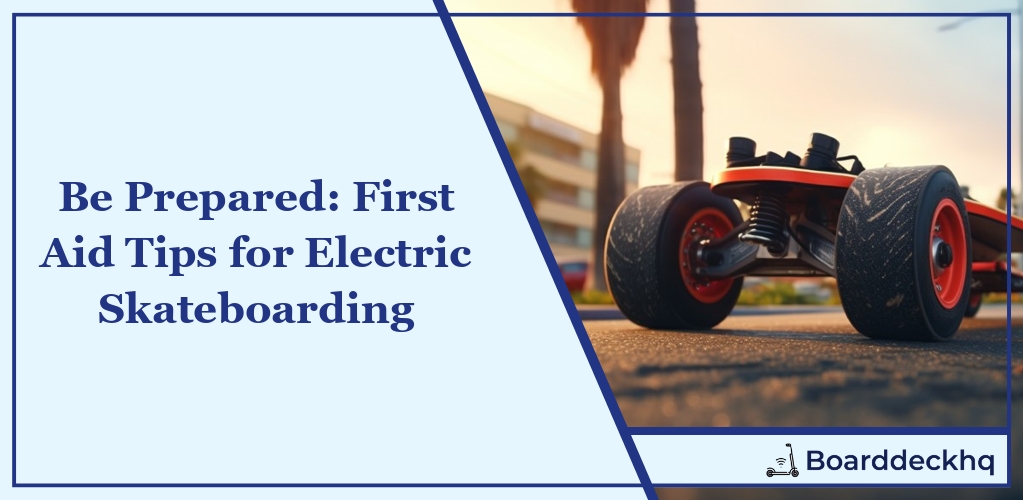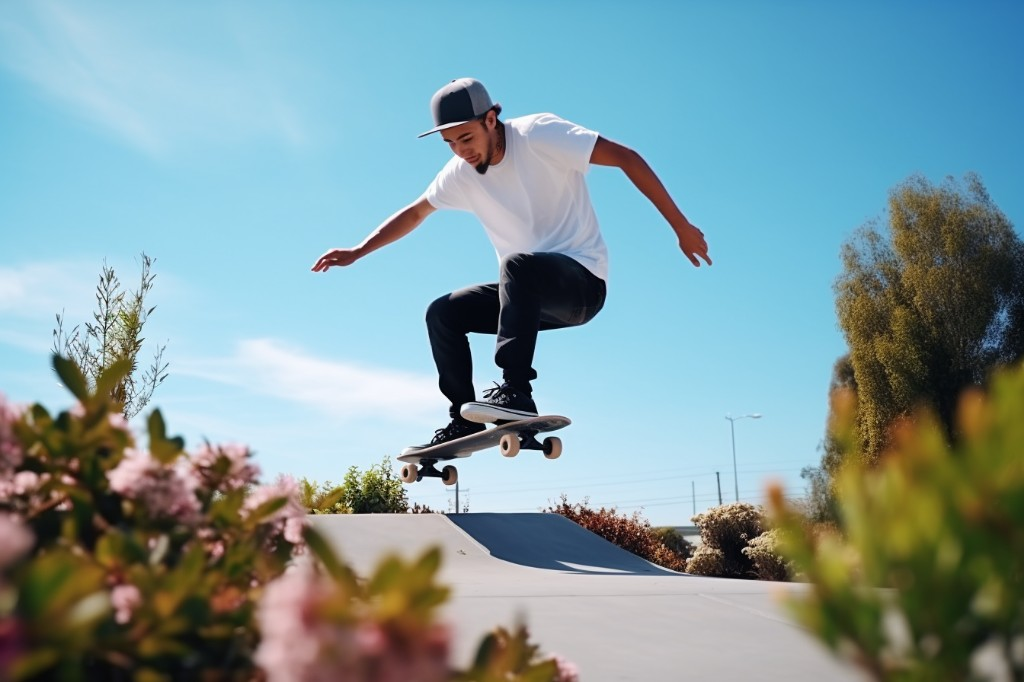Diving into the world of electric skateboarding can be thrilling, but it’s not without its fair share of risks. This comprehensive guide will arm you with the essential safety knowledge to ensure you’re well prepared for any scenario on your electrified ride. From understanding the indispensable safety gear and learning the right techniques to minimize injuries during a fall, to keeping a well-stocked skateboarder’s first aid kit and knowing how to respond to accidents, we’ve got you covered. We’ll also delve into the healing process after a skateboarding mishap, and the critical role fitness and nutrition play in preventing injuries.
What we’ll cover:
- The Excitement and Hazards of E-Skateboarding
- Must-Have Safety Gear
- Injury Prevention Techniques
- Your Skateboarding First Aid Kit
- First Aid Basics Post-Accident
- Healing from Skateboarding Injuries
- Fitness, Nutrition, and Injury Prevention
- The Importance of Regular Maintenance
- Safety in Street Riding
Ready to gear up and hit the road with confidence? Let’s dive into these electric skateboarding safety tips and first aid essentials to ensure your ride is as safe as it is exhilarating!
The Thrill and Risks of Electric Skateboarding
Electric skateboarding is a truly exhilarating experience. The rush you feel when you ride an electric skateboard for the first time is indescribable. The wind in your hair, the pavement rushing by under your feet, and the adrenaline pumping through your veins are all part of what makes electric skateboards so much fun. However, electric skateboarding is not without its risks. Unfortunately, electric skateboarding rides can result in accidents, ranging from minor to life-changing, if you don’t take certain precautions and use the right safety equipment.
Electric skateboards are fun, no doubt about it. But keep in mind that the higher speeds they can reach make them undoubtedly more dangerous than regular skateboards. Accidents can occur due to a number of reasons such as loss of control, mechanical failures, or even unavoidable obstacles on the road. That’s why it’s essential to take note of electric skateboarding first aid tips and practice caution at all times.
Essential Safety Gear for Electric Skateboarding
Safety should always be your primary concern when using an electric skateboard. The right safety gear can reduce the risk of injury in case of accidents, and using it is a sign of respect to the sport and to other riders.
Protective gear for electric skateboarding typically includes elbow pads, knee pads, wrist guards, and most importantly, a helmet. These pieces of equipment are designed to protect your most vulnerable body parts in case of a fall. Wearing a helmet, for instance, can greatly reduce the risk of head injuries.
It’s not just about wearing a helmet though, but also about making sure it fits properly. A helmet that’s too loose or too tight won’t provide adequate protection. Likewise, elbow pads and knee pads need to be securely fitted to offer optimal protection.
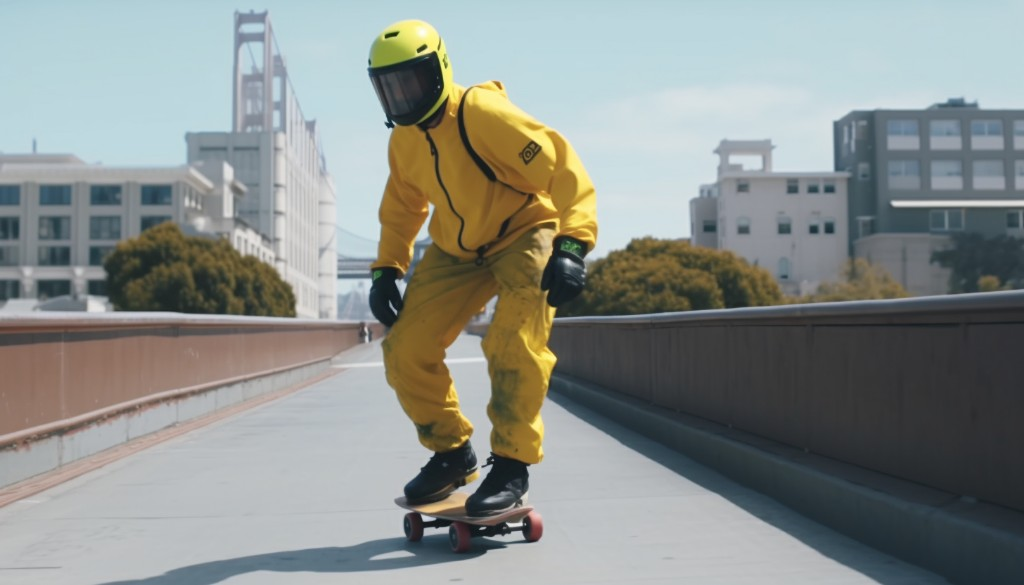
The proper protective gear helps protect you from injuries but remember that safety is not just about gear. You also need to ride responsibly. Follow local laws, be respectful of pedestrians and other riders, and always be aware of your surroundings.
Learning to Fall: Techniques for Injury Prevention
Injury prevention is another key aspect of safe electric skateboarding. One way to avoid or lessen injuries is by learning how to fall safely. Yes, you read that right! Just like martial artists practice rolls and falls to minimize injury, skateboarders can also benefit from learning fall techniques.
Some basic skills include trying bending your knees to lower your center of gravity and rolling when you fall, which can spread the impact over a larger part of your body and reduce injury severity. It’s also important not to tense up when you fall – relaxed muscles absorb impacts better than tensed ones.
Try to avoid falling onto your hands as this can result in wrist injuries or fractures. Using knee pads and elbow pads can give you alternative points of contact during a fall and help protect your wrists. Training and practice can help perfect these vital techniques.
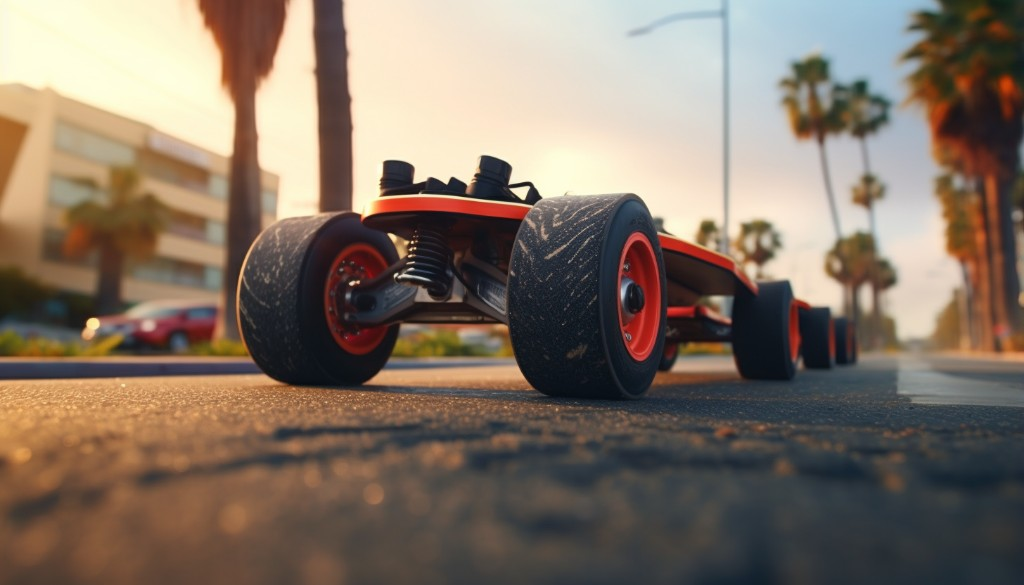
The First Aid Kit for Electric Skateboarders
Riding electric skateboards can be a thrilling experience. However, it’s inevitable for accidents to occur, and when they do, having the right first aid knowledge and supplies at hand can make a significant difference in the outcome of an injury.
Essential Items in a First Aid Kit
As a responsible skateboarder, it is crucial to identify what items should be included in your emergency kit. Proper preparation can potentially save lives and reduce the severity of injuries.
Here is a list of essentials:
- Sterile gloves: These are necessary when administering first aid to protect both the helper and the injured. They prevent any cross-contamination that may occur during the process.
- Antiseptic wipes: An essential item for cleaning wounds before dressing them. It helps prevent infection and promote healing.
- Bandages: Bandages are a versatile first aid tool. Use them to cover wounds, support sprains, or as a temporary tourniquet to stop bleeding.
- Adhesive Tape and Scissors: Useful for securing bandages and cutting material to size.
- Pain relief medication: For injuries that are particularly painful.
- Emergency blanket: Useful for cold and wet weather conditions while you wait for emergency assistance.
- Basic first aid guide: For reference should you need further guidance.
Remember, the goal of having these supplies is not just about being ready but also about being able to respond effectively in case of an accident.
Responding to Accidents: First Aid Basics
Knowing how to respond when an accident occurs is just as important as having a first aid kit. Therefore, it’s beneficial to have basic first aid training.
Handling Common Skateboarding Injuries
Different types of injuries require different emergency responses. Here are some guidelines:
- Fractures and Sprains: If you suspect a fracture, do not attempt to move the injured limb. Instead, immobilize it with a splint or bandage and seek medical help immediately. For sprains, use the RICE method (Rest, Ice, Compression, and Elevation) until you can get medical attention.
- Concussions: If a skateboarder hits their head and seems dazed, disoriented, or loses consciousness even briefly, they may have a concussion. Keep them still and call for emergency medical help right away.
- Cuts and Scrapes: Clean the wound with antiseptic wipes and cover it with bandages. If bleeding doesn’t stop, apply more pressure and seek medical attention.
Remember, as a first responder, understanding emergency signals like these can be crucial in an accident.
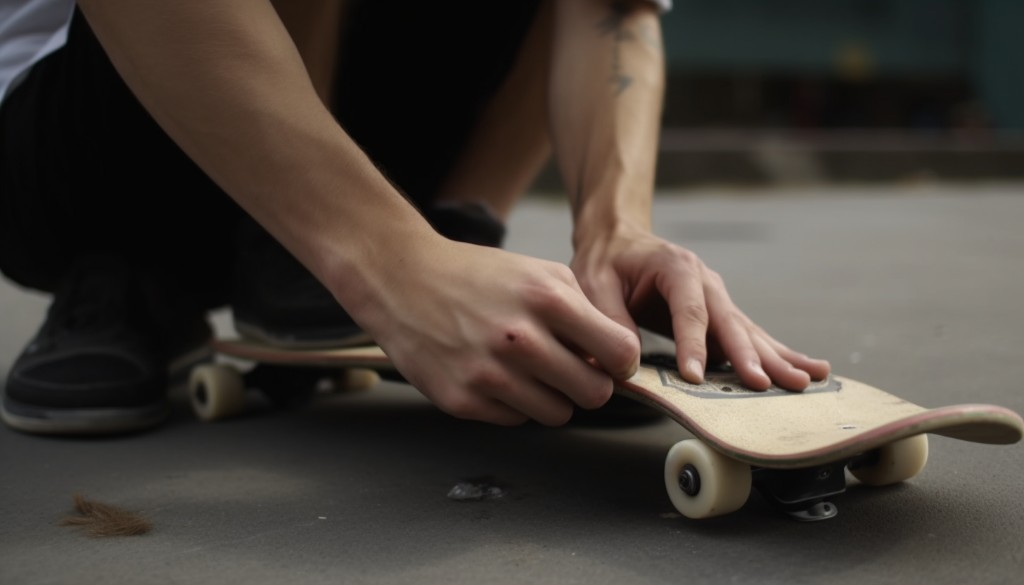
Recovering from Skateboarding Injuries
After the initial response and perhaps a visit to the hospital, the recovery process begins.
Steps for Recovery After an Accident
Here are some recovery tips:
- Rest: Allow your body time for healing by getting plenty of sleep and limiting physical activity.
- Hydration: Drink lots of fluids to keep your body hydrated and promote healing.
- Ice Packs: Use ice packs on the injured area to reduce swelling and numb pain.
- Compression Bandages: These help control swelling and provide support to injured limbs.
- Elevation Technique: Elevate the injured part above the level of your heart whenever possible. This helps reduce swelling.
- Pain Management: Over-the-counter pain relievers can help manage discomfort during recovery.
Recovery requires patience and dedication. Following these tips can help speed up the healing process and get you back on your skateboard in no time. Above all, follow the advice of medical professionals to ensure a speedy recovery.

The Role of Fitness and Nutrition in Injury Prevention
What does it take to stay injury-free? Is it just about wearing protective gear or taking safety precautions? No, it’s much more than that. It involves a combination of factors that include physical fitness and a proper diet. Yes, you heard that right. It might seem unrelated, but physical fitness and a proper diet play a significant role in injury prevention.
Physical fitness can be your secret weapon against injuries. It ensures that your body is in the best condition to withstand any unforeseen circumstances that might lead to injury. When you are fit, your body is more robust and resilient. It means you have improved balance, better coordination, and increased flexibility. All these combined lower the chances for sudden falls or awkward movements that could result in injuries.
But how does proper diet fit into this picture? A well-balanced diet ensures your body has the necessary nutrients and energy required for its optimal functioning. It helps in strengthening your muscles and bones, which are vital for maintaining physical stability and balance, thus minimizing the chances of injury.
In other words, physical fitness gets your body ready for action, and a proper diet keeps it running smoothly. Together, they form a formidable shield against injuries.
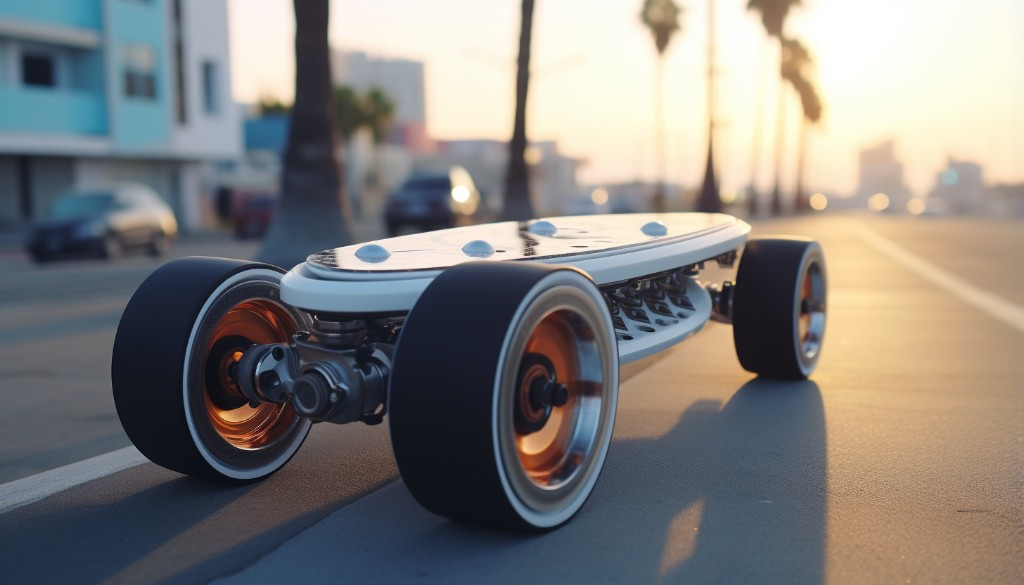
The Importance of Regular Maintenance
Moving on, have you ever considered how regular maintenance could help prevent accidents? This is particularly true when it comes to electric skateboard maintenance. Just like a car or bike, your electric skateboard needs regular check-ups to ensure it’s in perfect shape.
Think of it this way: every time you step onto your electric skateboard, you’re putting a lot of faith in it. You trust that it will carry you safely from point A to point B. But here’s the thing – your skateboard can only serve you well if you take good care of it.
Regular maintenance involves checking for any wear and tear, tightening loose screws, replacing worn-out parts, and ensuring the brakes are working correctly. By keeping your skateboard in top condition, you reduce the risk of equipment failure that could lead to a dangerous fall or collision.
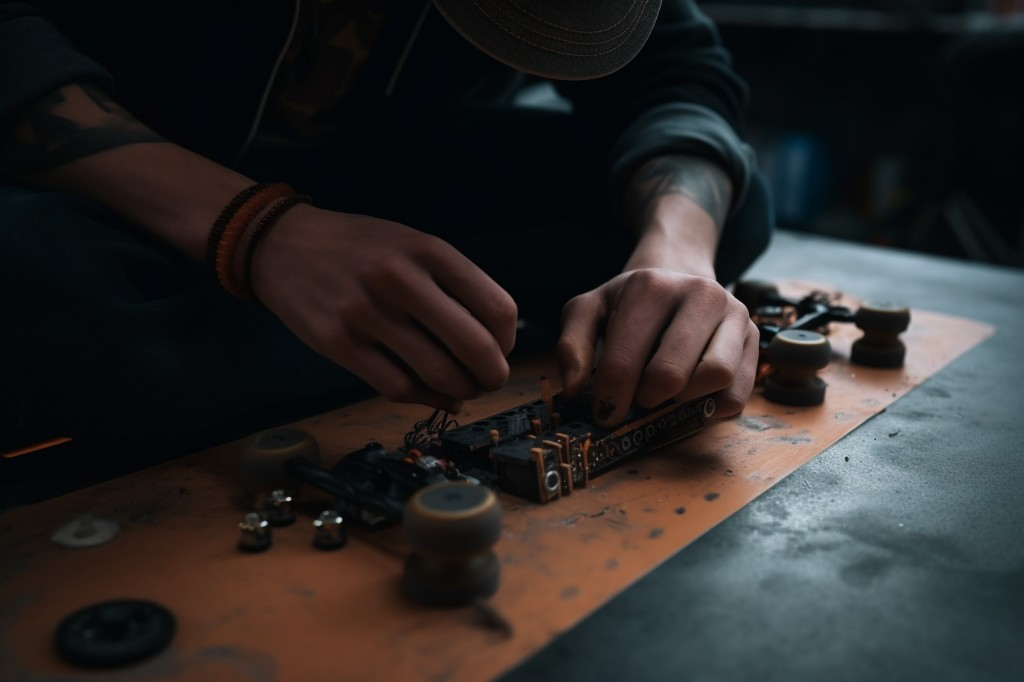
Taking Safety to the Streets: Riding Etiquette and Law Compliance
Finally, let’s talk about taking safety to the streets with riding etiquette and law compliance. Whether you’re a seasoned skateboarder or an amateur, knowing and adhering to riding etiquette and skateboard laws are crucial.
Why is this so important? Well, riding etiquette helps facilitate smooth interactions between riders and other road users such as pedestrians, cyclists, and motorists. It includes practices like practicing defensive riding, signaling before turning or stopping, and respecting other road users’ space. If you happen to be skateboarding with others, then communication is particularly important in preventing accidents and keeping everyone around you safe.
Complying with skateboard laws helps to maintain order and ensure everybody’s safety on the road. These laws might regulate where you can ride, what safety gear you must wear, or how fast you can go. Ignoring these laws not only puts you at risk but also other innocent road users.
Furthermore, let’s not forget about road safety. It includes looking out for obstacles in your path, staying visible at night with appropriate lighting or reflective clothing, and staying aware of the traffic around you.
Just like physical fitness and regular skateboard maintenance, riding etiquette, law compliance, and road safety play vital roles in preventing skateboarding accidents and injuries. Now that’s what I call taking safety to the streets!
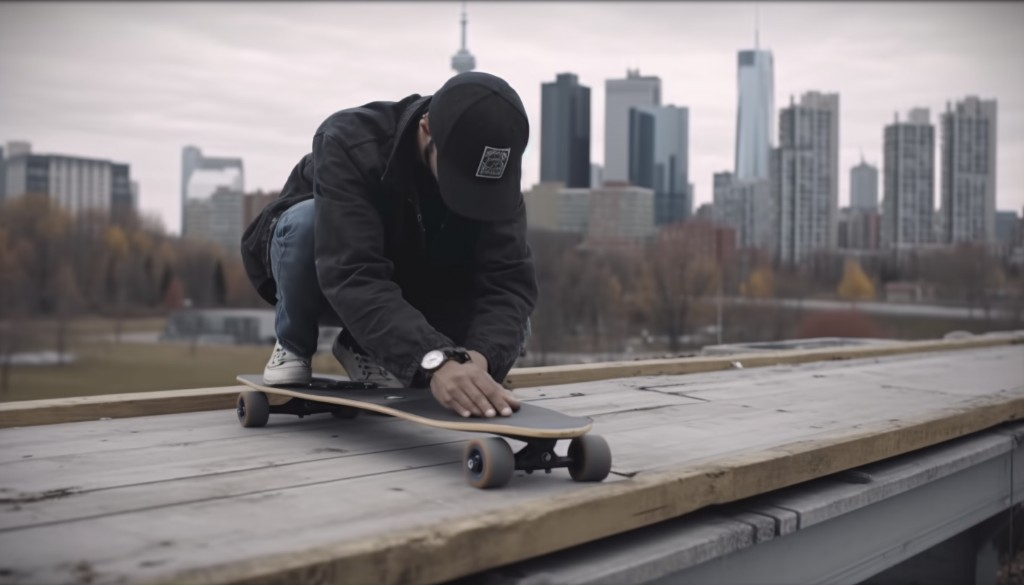
Understanding Your Skill Level
Riding tips are not just about improving your skill level but also about maintaining safety. Always remember that understanding your skill level and riding within it is one of the best ways to prevent accidents. As your skill level improves, so will your ability to handle more challenging rides safely. Until then, stay within your limits and practice safe riding to avoid unwanted injuries.
Closing Thoughts
Electric skateboarding, with its thrill and inherent risks, serves as a vivid reminder of the importance of safety in sports activities. The use of essential safety gear cannot be overstated, with items such as helmets, elbow pads, and knee pads making a significant difference in injury prevention. Moreover, learning how to fall correctly can mitigate the severity of accidents, reinforcing the need for proper training. Most importantly, a well-stocked first aid kit is a necessity for every electric skateboarder. Knowing how to respond effectively to accidents using the basics of first aid can literally be a life-saver. Moreover, recovering from skateboarding injuries necessitates a well-rounded approach that includes not just rest, but also appropriate nutrition and fitness practices.
There are a number of things you can do to mitigate the risks of riding an electric skateboard, including carrying out regular maintenance to ensure the optimal functioning of the board. Riding etiquette and law compliance are not mere formalities but integral aspects of safety on the streets, which can also help in minimizing the probability of an accident.
So whether you’re a seasoned rider or just starting out with your first electric skateboard, remember that it’s not just about fun – safety matters too! Make sure you’re equipped with the right gear, have some basic first aid knowledge, and understand techniques for safer falls. Happy and safe riding!
Frequently Asked Questions
What are some essential safety gear for electric skateboarding?
Essential safety gear for electric skateboarding includes a helmet, elbow pads, knee pads, and wrist guards. These items protect against injuries by absorbing shock from falls or collisions.
How can I fall safely when skateboarding?
Falling safely while skateboarding involves techniques such as bending your knees to lower your center of gravity, trying to roll when you fall to distribute the impact, and protecting your head at all times. Training and practice can help perfect these techniques.
What should be included in a first aid kit for electric skateboarders?
A first aid kit for electric skateboarders should include bandages, adhesive tape, antiseptic wipes, tweezers, safety pins, sterile gloves, pain relief medication, and an emergency blanket. It’s also useful to have a basic first aid guide for reference.
How can I recover quickly from a skateboarding injury?
Recovering quickly from a skateboarding injury involves rest, proper nutrition, and a fitness regimen that includes strength training and flexibility exercises. It’s also essential to seek medical advice to ensure a correct diagnosis and treatment plan.
Why is regular maintenance important for electric skateboards?
Regular maintenance is important for electric skateboards to ensure optimal performance and longevity. This includes checking the battery, tightening screws and bolts regularly, checking the wheels for wear and tear, and ensuring the board’s cleanliness. Regular maintenance also reduces the risk of equipment failure which could lead to accidents. Using an electric skateboard maintenance app is one way to ensure your board stays in optimal condition.
